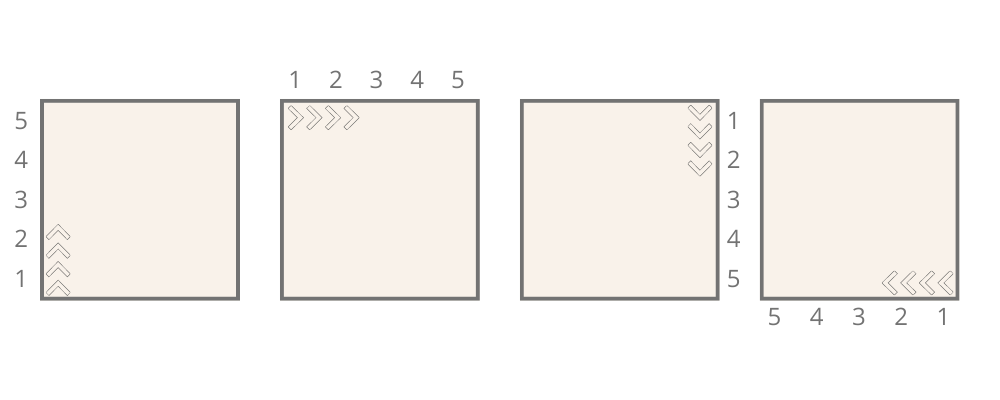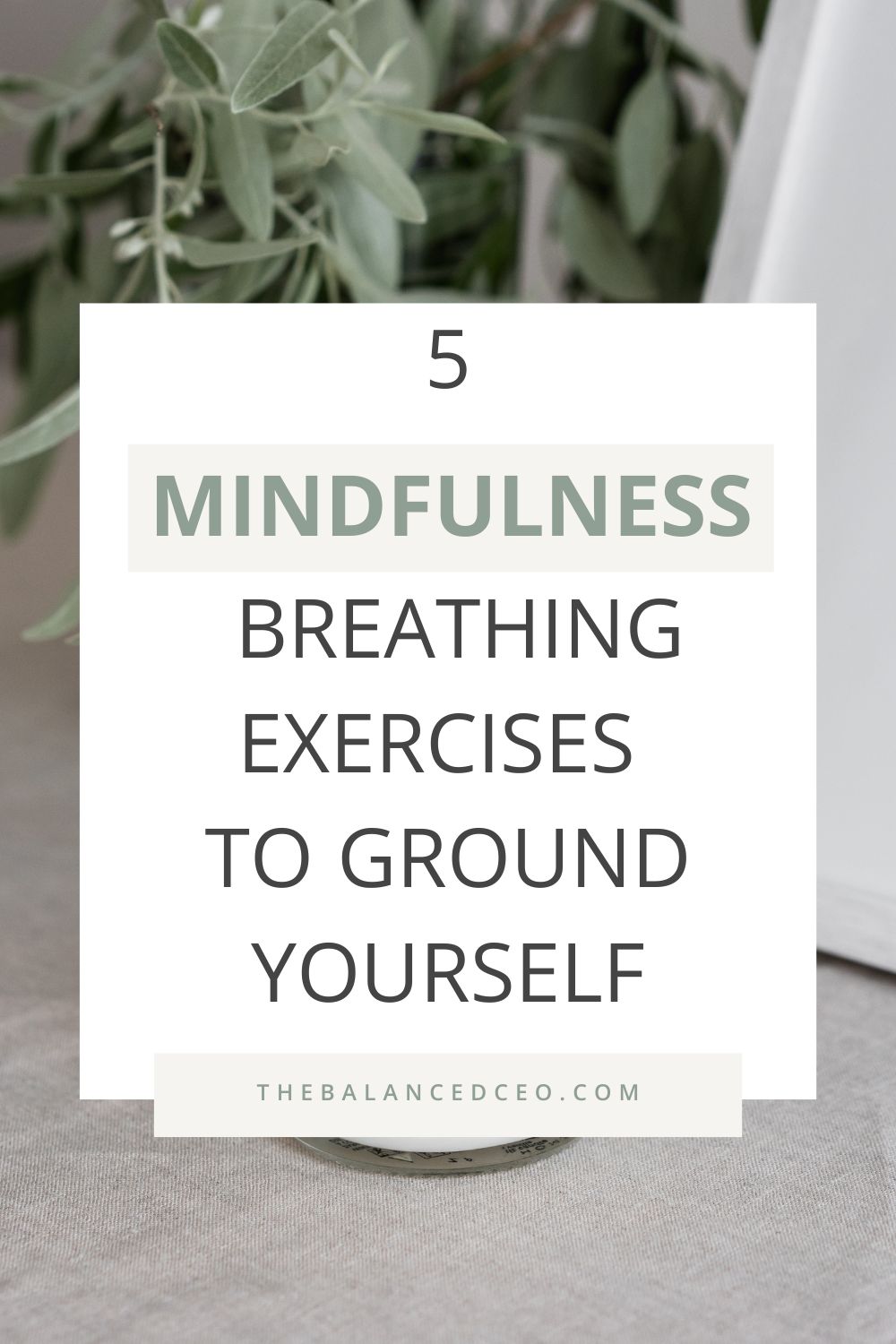This post may contain affiliate links, which means I’ll receive a commission if you purchase through my links, at no extra cost to you. Please read full disclosure for more information.

5 Mindfulness Breathing Exercises to Ground Yourself
Like fire, the whole sky is lit. My eyes are open in awe. Orange, pink, and purple. The clouds, like cotton candy. Soft music is playing in the background as other cars are swishing by. And my boyfriend singing absolutely out of tune besides me. It’s small moments like this that are so precious.
And it’s moments like this we often miss. We rush from one task to another. Busy and restless. We are not present when we eat or when our loved ones share important news. Not even when our body says we are tired. Have you ever wished you’d taken the time to slow down?
Today I’ll show you 5 Mindfulness Breathing Techniques I use to ground myself. To come back to the present. Mindful breathing will help you experience more of those tiny moments and to be more content and happy with life.
Start with the right Posture
It all starts with the right posture:
- Whether you sit or stand straighten your spine.
- Relax your shoulders.
- Imagine the back of your head is being pulled towards the sky.
- Your chin should be parallel to the ground. Often our chin is pointing upwards.
- Slightly pull in your lower belly.
- Keep your feet shoulder-width apart.
- Let your arms hang comfortably. If you are in a seated position you can rest your arms on your knees, either facing upwards or downwards.
- Close your eyes to reduce distractions.
- Relax your facial expressions. Release that tightness between your eyebrows. Move your jaw from left to right and back to get rid of the tension. Relax your mouth.
- Breathe in, breathe out. Feel the sun on your face. The wind.
- Give us a little smile.
You are ready to go. Short notice If you feel dizzy while doing these exercises stop. Don’t overdo them as a beginner. Go for a maximum of 3 or 4 cycles or you might pass out.
1. Box Breathing
The first breathing exercise is box breathing. Navy SEALS uses this method to reduce stress. It’s a great technique to reduce stress during the day. You are running from one appointment to the next? Try this exercise to ground yourself:
Step 1: Imagine a box. Inhale for 5 seconds, while your mind wanders up the box.
Step 2: Hold your breath for 5 seconds, while you imagine going to the right of the box.
Step 3: Exhale for 5 seconds. Wandering down the box.
Step 4: Hold your breath for 5 seconds as you wander to the left.
Step 5: Begin the pattern anew.
Your thoughts won’t be able to stray, since you have to focus on the box.

2. Ocean Breathing – Ujjayi
The second method I’d like to show you is the ocean breath – Ujjayi. I first came across this breathing method, while doing yoga. Ujjayi is often translated to the “one who is victorious”. It’s an age-old breathing exercise that will help you reduce stress, decrease muscle tension, and improve focus and concentration.
Step 1: Keep your mouth closed. Breathe in through your nose.
Step 2: When exhaling, press the air out to create the sounds of ocean waves. Breathe out as if you’d fog up a window, but keep your mouth closed.
Step 3: Keep your inhalations and exhalations equal.
At first, it might feel like you aren’t getting enough air.
3. One-Sided Nostril Breathing – Nadi Shodhan
Alternate nostril breathing is a great tool to connect with your body. It’s another yoga breathing method. Nadi in Sanskrit means “channel” or “flow” and shodhana means “purification.” The breathing method is supposed to clear and purify blocked energy channels. Don’t try this if you are sick.
Step 1: Use the thumb and the ring finger to control the airflow. The index finger and middle finger rest on your forehead between the eyebrows. The pinky finger can rest. Inhalations and exhalations should be equal in duration.
Step 2: Breath in through your left nostril. 1-2-3.
Step 3: Breath out through your right nostril. 1-2-3.
Step 4: Breath in through your right nostril. 1-2-3.
Step 5: Breath out through your left nostril. 1-2-3.
You can slowly increase the rounds you go. It might be difficult at first. Make sure to include these grounding breathing exercises in your self-care morning routine and in your relaxing nighttime routine to start and end your day comfortably, relaxed, and calmly.
Related Reads:
•6 Ways to Incorporate Mindfulness into Your Day
•How to Find Inner Peace and Calm Among the Hustle
4. 4-7-8 Breathing
The 4-7-8 method is a simple mindfulness breathing exercise that can help you destress, reduce anxiety, and helps you fall asleep. Keep your tongue at the roof of your mouth, right behind your teeth. Empty your lungs.
Step 1: Breath in quietly through your nose for 4 seconds.
Step 2: Hold your breath for 7 seconds.
Step 3: Exhale forcefully through your mouth for 8 seconds.
Dr. Andrew Weill recommends starting with 3 to 4 breath cycles for the first month and never doing more than 8 breath cycles.
5. 3 Third Breathing
Our last mindfulness breathing exercise for today is 3 Third Breathing. It’s calming. Make sure your lungs feel comfortably full, and not like they are going to burst.
Step 1: Breath in ⅓ of your lungs’ capacity.
Step 2: Hold your breath for 5 seconds.
Step 3: Breath in another ⅓ of your lungs’ capacity.
Step 4: Hold your breath for 5 seconds.
Step 5: Breath in the last ⅓ of your lungs’ capacity.
Step 6: Exhale.
Repeat the cycle a few times.
Try these exercises throughout the day
Whenever you feel overwhelmed, stressed, absent-minded, and not in the present moment try one of these 5 breathing exercises to reconnect with your body. With practice, you’ll be able to ground yourself within minutes. You’ll be able to control your emotions better and you’ll fall asleep easier.
Carina
Guest Blogger
Two years ago I was a little lost, not sure what I really wanted, so I decided to go on a journey with my sister Julia and we started our blog. After weeks of hardships, guilt trips, and struggles we finally wake up each morning happy with how things are going. New home. New job. New life. On our blog, we share with you our stories and self-improvement strategies.





Leave a Reply